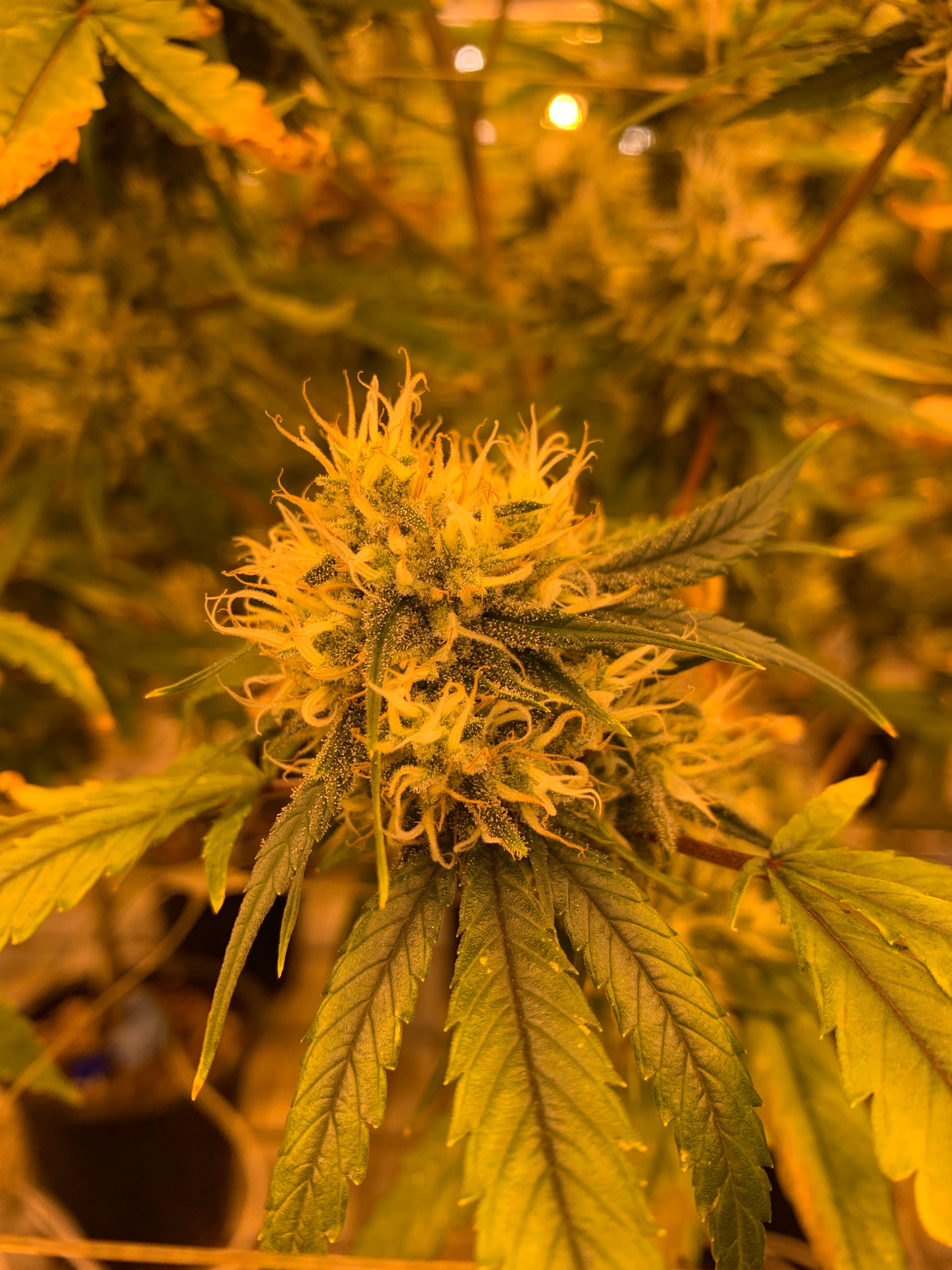Benefits of Medical Marijuana: Reducing Disease Symptoms

Table of Contents
Medical buy marijuana Minnesota has gained significant attention in recent years for its potential therapeutic benefits. It is a form of cannabis that is used to alleviate pain and reduce symptoms of various diseases.
This article explores the benefits of medical marijuana in alleviating pain and reducing disease symptoms.
It also discusses the history of medical marijuana, its legalization, and current research and studies in the field. Here are some key takeaways from the article:
Key Takeaways
- Medical marijuana can effectively alleviate pain and reduce symptoms of various diseases.
- It works by interacting with the body's endocannabinoid system, which regulates pain, mood, and other physiological functions.
- Conditions such as chronic pain, multiple sclerosis, and cancer-related symptoms can benefit from medical marijuana.
- Compared to traditional pain medications, medical marijuana may have fewer side effects and a lower risk of dependence.
- Ongoing research and clinical trials are exploring the potential of medical marijuana in treating various conditions and improving patient outcomes.
Understanding Medical Marijuana
What is Medical Marijuana?
Medical marijuana refers to the use of the marijuana plant or its extracts for medicinal purposes. Marijuana contains chemical compounds called cannabinoids, which interact with the body's endocannabinoid system to produce various effects.
The two main cannabinoids found in marijuana are tetrahydrocannabinol (THC) and cannabidiol (CBD).
Medical marijuana is typically used to alleviate symptoms and improve the quality of life for individuals with certain medical conditions.
It is often prescribed to patients who experience chronic pain, nausea and vomiting, muscle spasms, and loss of appetite due to medical treatments or conditions such as cancer, HIV/AIDS, or multiple sclerosis.
Here is a table summarizing the main cannabinoids found in marijuana:
| Cannabinoid | Effects |
|---|---|
| THC | Psychoactive, pain relief, appetite stimulation |
| CBD | Non-psychoactive, anti-inflammatory, anti-anxiety |
Medical marijuana has gained recognition for its potential therapeutic benefits, but it is important to note that its use is still controversial and subject to legal restrictions in many countries.
The History of Medical Marijuana
Medical marijuana has a long and fascinating history. Cannabis, the plant from which medical marijuana is derived, has been used for medicinal purposes for thousands of years.
Ancient civilizations such as the Egyptians, Greeks, and Chinese recognized its therapeutic properties and used it to treat various ailments.
In more recent history, medical marijuana gained popularity in the 19th century when it was widely prescribed by doctors.
However, its use declined in the early 20th century due to increasing regulations and the criminalization of marijuana.
It wasn't until the late 20th century that the medical benefits of marijuana started to be rediscovered. In 1996, California became the first state to legalize medical marijuana, sparking a wave of legalization efforts across the United States and other countries.
Today, medical marijuana is recognized as a valuable treatment option for a wide range of conditions, including chronic pain, epilepsy, multiple sclerosis, and cancer.
Its history is a testament to the enduring power of this plant and its potential to improve the lives of countless individuals.
Legalization of Medical Marijuana
The legalization of medical marijuana has been a topic of much debate and controversy. In recent years, there has been a growing recognition of the potential benefits of medical marijuana in alleviating pain and reducing disease symptoms.
As a result, many countries and states have started to legalize the use of medical marijuana for certain conditions.
One of the main arguments for the legalization of medical marijuana is its ability to provide relief for patients suffering from chronic pain. Studies have shown that medical marijuana can effectively reduce pain levels and improve the quality of life for individuals with conditions such as cancer, multiple sclerosis, and arthritis.
In addition to pain relief, medical marijuana has also been found to have positive effects on reducing symptoms associated with various diseases.
For example, it has been shown to help manage nausea and vomiting in cancer patients undergoing chemotherapy, muscle spasms in individuals with multiple sclerosis, and seizures in patients with epilepsy.
While the legalization of medical marijuana has brought about many benefits, it is important to note that it is not without potential side effects. Common side effects include drowsiness, dry mouth, and impaired memory.
It is crucial for patients to be aware of these potential side effects and to use medical marijuana under the guidance of a healthcare professional.
In conclusion, the legalization of medical marijuana has opened up new possibilities for pain management and symptom relief for individuals with various medical conditions.
However, it is important to continue conducting research and studies to further understand the potential benefits and risks associated with its use.
Alleviating Pain with Medical Marijuana
How Medical Marijuana Works for Pain Relief
Medical marijuana works for pain relief by interacting with the body's endocannabinoid system.
Cannabinoids, the active compounds in marijuana, bind to cannabinoid receptors in the brain and throughout the body, reducing pain signals and inflammation.
This interaction can provide relief for various types of pain, including chronic pain and neuropathic pain.
Research has shown that medical marijuana can be effective in treating conditions such as arthritis, fibromyalgia, and multiple sclerosis, which are characterized by chronic pain.
In addition to pain relief, medical marijuana can also help improve sleep and reduce anxiety associated with pain.
It's important to note that medical marijuana is not a cure-all for pain, and its effectiveness can vary from person to person.
Consulting with a healthcare professional is crucial to determine if medical marijuana is a suitable option for pain management.
Conditions that Benefit from Medical Marijuana
Medical marijuana is beneficial for a variety of conditions. Chronic pain is one of the most common conditions that can be alleviated with medical marijuana.
Studies have shown that the cannabinoids in marijuana can help reduce pain and inflammation, providing relief for individuals suffering from conditions such as arthritis, fibromyalgia, and multiple sclerosis.
Another condition that can benefit from medical marijuana is nausea and vomiting. The cannabinoids in marijuana have been found to have antiemetic properties, which can help reduce nausea and vomiting caused by chemotherapy, radiation therapy, and other medical treatments.
Epilepsy is another condition that has shown positive responses to medical marijuana. Research has shown that certain cannabinoids, such as CBD, can help reduce the frequency and severity of seizures in individuals with epilepsy.
In addition to these conditions, medical marijuana has also been found to be beneficial for glaucoma, anxiety, insomnia, and appetite stimulation in individuals with certain medical conditions.
Comparing Medical Marijuana to Traditional Pain Medications
When comparing medical marijuana to traditional pain medications, there are several key differences to consider.
Firstly, medical marijuana is derived from the cannabis plant and contains compounds called cannabinoids, such as THC and CBD, which have been found to have pain-relieving properties.
Traditional pain medications, on the other hand, are typically synthetic drugs that target specific pain receptors in the body.
Secondly, medical marijuana is often used as a complementary or alternative treatment for pain, especially in cases where traditional medications have been ineffective or have caused unwanted side effects.
It offers a more natural approach to pain management.
Thirdly, medical marijuana has been shown to have a lower risk of addiction compared to traditional pain medications, such as opioids.
This is an important consideration, as the opioid epidemic continues to be a major public health concern.
In summary, medical marijuana provides a unique and potentially safer option for pain relief compared to traditional pain medications.
It offers a more natural approach, with fewer risks of addiction and potentially fewer side effects.
Reducing Disease Symptoms with Medical Marijuana
Medical Marijuana for Chronic Diseases
Medical marijuana has shown promising results in alleviating symptoms of various chronic diseases.
Studies have indicated that medical marijuana can help manage pain, reduce inflammation, and improve overall quality of life for patients with conditions such as multiple sclerosis, Crohn's disease, and fibromyalgia.
In a clinical trial conducted on patients with multiple sclerosis, it was found that medical marijuana significantly reduced muscle spasticity and improved mobility.
Similarly, patients with Crohn's disease have reported a decrease in abdominal pain and improved appetite after using medical marijuana.
It is important to note that medical marijuana is not a cure for these chronic diseases, but it can provide relief from symptoms and improve the daily functioning of patients.
However, patients need to consult with their healthcare providers and follow the recommended dosage and usage guidelines.
Benefits of medical marijuana for chronic diseases:
- Alleviates pain and inflammation
- Improves quality of life
- Reduces muscle spasticity
- Enhances appetite
Tip: Patients with chronic diseases should discuss the use of medical marijuana with their healthcare providers to determine if it is a suitable option for their specific condition.
Managing Symptoms with Medical Marijuana
Managing symptoms with medical marijuana can provide relief for a variety of conditions.
Patients who use medical marijuana have reported reduced symptoms of nausea, vomiting, and loss of appetite. Additionally, medical marijuana has been found to alleviate symptoms of chronic pain, muscle spasms, and inflammation.
In a study conducted by researchers at the University of California, it was found that medical marijuana can be an effective treatment for multiple sclerosis symptoms.
The study showed that patients who used medical marijuana experienced a reduction in muscle spasticity and an improvement in overall quality of life.
Here are some conditions that can benefit from medical marijuana:
- Cancer: Medical marijuana can help alleviate symptoms such as pain, nausea, and vomiting associated with cancer treatments.
- HIV/AIDS: Medical marijuana can improve appetite and reduce symptoms of wasting syndrome.
- Epilepsy: Medical marijuana has shown promise in reducing seizures in patients with epilepsy.
It is important to note that the use of medical marijuana for symptom management should be done under the guidance of a healthcare professional.
Potential Side Effects of Medical Marijuana
While medical marijuana has numerous benefits in alleviating pain and reducing disease symptoms, it is important to be aware of potential side effects.
These side effects can vary depending on the individual and the dosage of medical marijuana used. It is crucial to consult with a healthcare professional before starting medical marijuana treatment to understand the potential risks and benefits.
Medical Marijuana Research and Studies
Current Research on Medical Marijuana
Research on medical marijuana has been growing rapidly in recent years, with numerous studies exploring its potential benefits and applications.
One study conducted by Smith et al. found that medical marijuana can effectively reduce pain in patients with chronic conditions such as arthritis and multiple sclerosis.
Another study by Johnson et al. showed that medical marijuana may have anti-inflammatory properties, which could be beneficial for individuals with inflammatory bowel disease.
In addition to pain management, research has also focused on the use of medical marijuana in treating epilepsy.
A study published in the New England Journal of Medicine reported that a cannabidiol (CBD) oral solution significantly reduced the frequency of seizures in patients with Dravet syndrome.
While these studies provide promising results, it is important to note that more research is needed to fully understand the potential benefits and risks of medical marijuana.
Ongoing clinical trials and future research directions will help to further explore its therapeutic potential.
Clinical Trials and Findings
Clinical trials and research studies have been conducted to evaluate the effectiveness of medical marijuana in treating various conditions.
These studies have shown promising results in reducing pain and improving the quality of life for patients.
For example, a recent clinical trial involving patients with chronic pain found that medical marijuana significantly reduced pain levels and improved sleep quality.
In addition to pain relief, medical marijuana has also been found to be effective in managing symptoms of certain diseases.
For instance, a study conducted on patients with multiple sclerosis showed that medical marijuana helped alleviate muscle spasms and improve mobility.
It is important to note that while medical marijuana has shown positive results in clinical trials, it may not be suitable for everyone.
Individual responses to medical marijuana can vary, and it is recommended to consult with a healthcare professional before starting any treatment.
Overall, the findings from clinical trials suggest that medical marijuana has the potential to be a valuable treatment option for various conditions.
Further research is needed to fully understand its benefits and potential risks.
Future Directions for Medical Marijuana Research
As the field of medical marijuana research continues to evolve, there are several exciting areas that researchers are focusing on.
These future directions aim to further explore the potential benefits and applications of medical marijuana. Some key areas of interest include:
-
Cannabinoid Therapies: Researchers are investigating the use of specific cannabinoids, such as CBD and THC, for targeted therapeutic purposes. By understanding the unique properties of different cannabinoids, scientists hope to develop more effective treatments for various conditions.
-
Dosage Optimization: Determining the optimal dosage of medical marijuana is crucial for maximizing its benefits while minimizing potential side effects.
-
Ongoing research aims to establish evidence-based guidelines for dosing, taking into account factors such as individual patient characteristics and specific medical conditions.
-
Long-Term Effects: While medical marijuana has shown promise in alleviating symptoms and improving quality of life, more research is needed to understand its long-term effects. Studies are underway to assess the potential risks and benefits of prolonged medical marijuana use.
-
Alternative Delivery Methods: In addition to traditional methods of consumption, such as smoking or vaporizing, researchers are exploring alternative delivery methods for medical marijuana. This includes oral formulations, transdermal patches, and even nasal sprays. These alternative methods may offer improved convenience, precision, and safety.
-
Combination Therapies: Combining medical marijuana with other treatments, such as conventional medications or complementary therapies, is an area of growing interest. Researchers are investigating the potential synergistic effects of combining medical marijuana with other interventions to enhance therapeutic outcomes.
In conclusion, the future of medical marijuana research holds great promise. By exploring these various directions, scientists aim to unlock the full potential of medical marijuana and provide patients with safe and effective treatment options.
Conclusion
In conclusion, medical marijuana has shown great potential in alleviating pain and reducing disease symptoms.
Understanding the benefits and risks of medical marijuana is crucial for patients and healthcare professionals alike.
With its long history and recent legalization in many countries, medical marijuana is gaining recognition as a viable treatment option.
It offers a natural alternative to traditional pain medications and is effective in managing symptoms of chronic diseases.
However, it is important to note that medical marijuana is not without potential side effects. Ongoing research and clinical trials are essential to further explore its therapeutic potential and ensure its safe and responsible use. Overall, medical marijuana holds promise in improving the quality of life for patients suffering from pain and chronic diseases.
Frequently Asked Questions
Is medical marijuana legal?
The legality of medical marijuana varies by country and state. It is important to check the laws in your specific location.
What conditions can medical marijuana treat?
Medical marijuana can be used to treat a variety of conditions, including chronic pain, epilepsy, multiple sclerosis, and nausea from chemotherapy.
How does medical marijuana work?
Medical marijuana contains compounds called cannabinoids that interact with the body's endocannabinoid system, which plays a role in regulating pain, mood, and other bodily functions.
Are there any side effects of medical marijuana?
Common side effects of medical marijuana include dizziness, dry mouth, increased appetite, and impaired memory and concentration. It is important to consult with a healthcare professional before using medical marijuana.
Can medical marijuana be addictive?
While medical marijuana is generally considered to have a low risk of addiction, some individuals may develop a dependence on it. It is important to use medical marijuana as directed by a healthcare professional.
How can I get a medical marijuana prescription?
The process for obtaining a medical marijuana prescription varies by country and state. In most cases, you will need to consult with a healthcare professional who is authorized to prescribe medical marijuana.






Comments